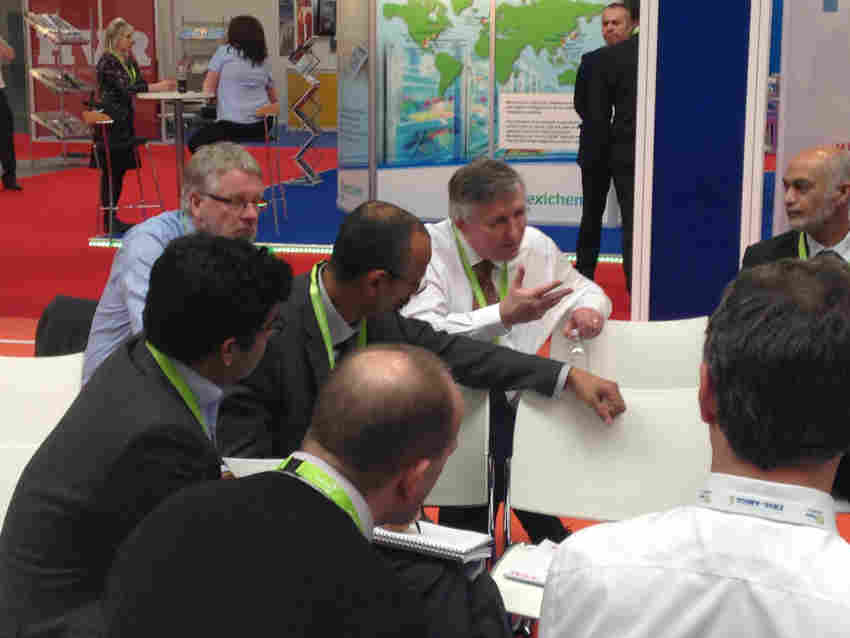19 February 2016
|
| The Institute of Refrigeration held its annual conference at the NEC near Birmingham February. Here is a summary of the event the theme of which was 'Emissions, Energy and EcoDesign'. Topics included system design in the future as a consequence of the Ecodesign directive, end of life treatment for temperature exchange equipment, EN 378 changes and challenges, Ecodesign case studies, updates on emission reduction and a related case study. |
Ecodesign
Judith Evans from Judith Evans, London South Bank University & Refrigeration Development and Testing began the conference sessions with a details about the Ecodesign and Energy Labelling Directives, their legal frameworks, requirements and their impact on the industry.
The Ecodesign directive affects manufacturers making and selling more than 200,000 units a year in a product segment within the EU. It has little impact on the size of the market and its structure, and appears to be positive for business. Ecodesign aims to deliver energy savings, improve energy supply security in the EU, create jobs and to help the community to reach its climate and energy targets.
By 2020, Ecodesign aims to save 600 TWh/yr of electricity, 600 TH/yr in heat savings and €900 billion/yr in energy costs for consumers and business.
To comply, manufacturers have to design and build products which meet the directive's technical documentation, declare conformity and produce their own technical documentation. The type of products affected include cooling and heating systems, ventilation products for both domestic and commercial markets.
Judith pointed out that although there is little sign of policing the directive now, the recent scandal involving car-maker VW's emissions, it is likely that enforcing Ecodesign will become a higher political priority. Read her paper here.
The Ecodesign directive affects manufacturers making and selling more than 200,000 units a year in a product segment within the EU. It has little impact on the size of the market and its structure, and appears to be positive for business. Ecodesign aims to deliver energy savings, improve energy supply security in the EU, create jobs and to help the community to reach its climate and energy targets.
By 2020, Ecodesign aims to save 600 TWh/yr of electricity, 600 TH/yr in heat savings and €900 billion/yr in energy costs for consumers and business.
To comply, manufacturers have to design and build products which meet the directive's technical documentation, declare conformity and produce their own technical documentation. The type of products affected include cooling and heating systems, ventilation products for both domestic and commercial markets.
Judith pointed out that although there is little sign of policing the directive now, the recent scandal involving car-maker VW's emissions, it is likely that enforcing Ecodesign will become a higher political priority. Read her paper here.
Content continues after advertisements
Temperature Exchange Equipment
Julie-Ann Adams from Really Green Credentials, spoke about End of life treatment for ‘temperature exchange equipment’ (WEEE) legislation, realities and operations.
'Temperature Exchange Equipment TEE)' is an EU term which covers domestic and commercial heating, cooling and freezing systems. The WEEE directive is about the re-use of materials used in TEE which have been discarded in the past. When a TEE unit comes to the end of its life waste management companies have to check which materials can be re-used, such as cables, circuit boards or gases. Not every material can be reused or recovered, however.
The WEEE directive aims to have 85% of materials to be recovered from 15th August 2015 onwards, and 80% of it to be prepared for re-sue and recycling. Read Julie's paper here.
'Temperature Exchange Equipment TEE)' is an EU term which covers domestic and commercial heating, cooling and freezing systems. The WEEE directive is about the re-use of materials used in TEE which have been discarded in the past. When a TEE unit comes to the end of its life waste management companies have to check which materials can be re-used, such as cables, circuit boards or gases. Not every material can be reused or recovered, however.
The WEEE directive aims to have 85% of materials to be recovered from 15th August 2015 onwards, and 80% of it to be prepared for re-sue and recycling. Read Julie's paper here.
EN378
| Star Refrigeration's Andy Pearson covered the challenges in 2016 with the EN378 standard, more details of which you can read in the IOR update in the February issue of the ACR Journal. Foster Refrigerator's Chris Playford provided an EcoDesign case study and how it has impacted the company's business. You can read Chris' paper here. Ray Gluckman gave the audience a 'global perspective on emission reductions and the progress of high-GWP refrigerant phase-down around the world. Read Ray's paper here. |
Nick Franzen from Arctic Circle provide a case study with a retailer and how their CO2-based solution minimised emissions and reclaimed heat and overcame load balances from the heating and cooling system.









